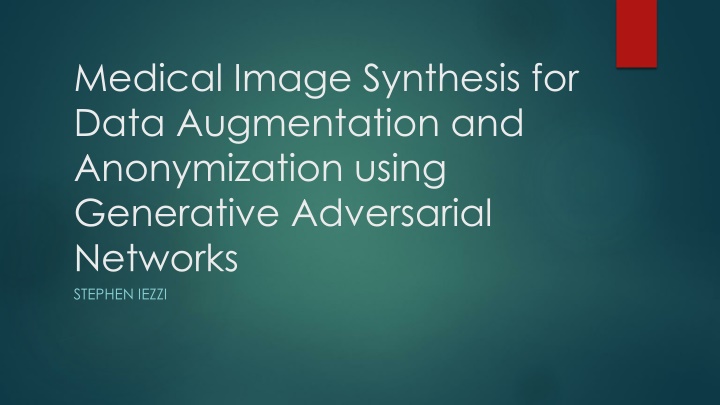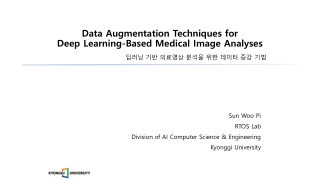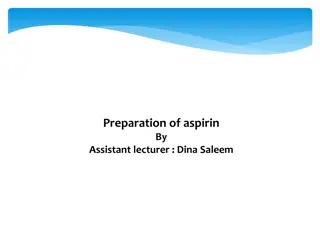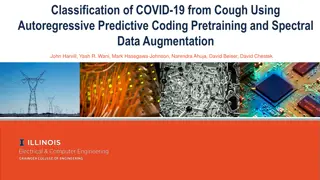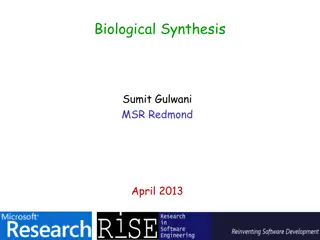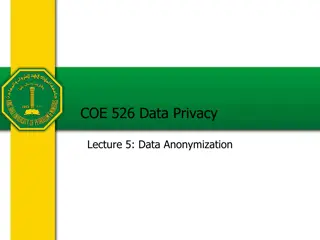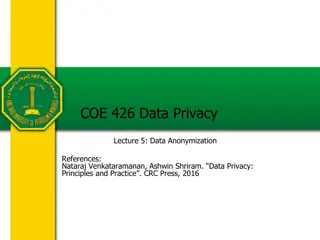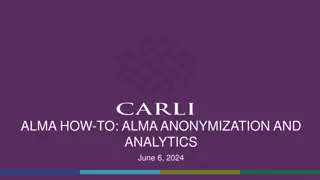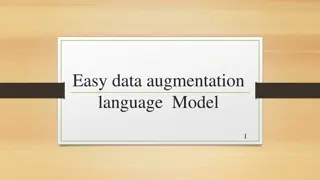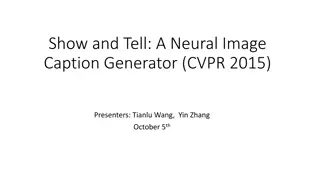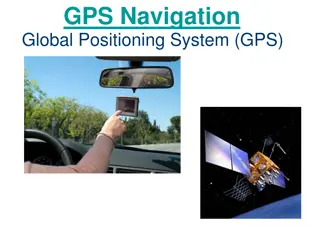Medical Image Synthesis for Data Augmentation and Anonymization
Addressing challenges in medical AI through GAN-based generation of synthetic images from publicly available brain MRI datasets to overcome imbalanced datasets and patient data constraints. Innovative approach using GANs to augment and anonymize data, providing efficient solutions for dataset scarcity and privacy concerns in medical imaging research. Various techniques employed for image synthesis and data augmentation, enhancing the quality and diversity of training datasets while ensuring patient data protection and anonymity.
Download Presentation

Please find below an Image/Link to download the presentation.
The content on the website is provided AS IS for your information and personal use only. It may not be sold, licensed, or shared on other websites without obtaining consent from the author.If you encounter any issues during the download, it is possible that the publisher has removed the file from their server.
You are allowed to download the files provided on this website for personal or commercial use, subject to the condition that they are used lawfully. All files are the property of their respective owners.
The content on the website is provided AS IS for your information and personal use only. It may not be sold, licensed, or shared on other websites without obtaining consent from the author.
E N D
Presentation Transcript
Medical Image Synthesis for Data Augmentation and Anonymization using Generative Adversarial Networks STEPHEN IEZZI
Motivation Some of the biggest problems in medical AI are the heavily imbalanced datasets and the constraints around the use of patient data This paper proposes a technique that would address both these problems by using GANs to generate synthetic images from publicly available brain MRI datasets Time required to manually annotate data has led to smaller datasets Traditional data augmentation techniques produce highly correlated image training data
Approach Utilize GANs as a form of data augmentation on the MRI images by altering tumor size, changing tumor location, or placing a tumor on an otherwise healthy brain Use 3D data as input/output a step up from related works which utilized 2D slices
Methods GAN trained to perform various tasks Image to Brain Segmentation (True brain label or generated brain label) Label to MRI Synthesis (Real Image or Synthetic Image) Image to Tumor Segmentation (True tumor label or generated tumor label
Data Augmentation with Synthetic Images MRI-to-label GAN applied to T1-weighted images. Merged with tumor label that is provided with dataset (possibly with alterations: change location, shrink, enlarge) The merged labels are then fed into label-to-MRI GAN to produce synthetic multi-parametric MRI with brain tumor
Data Anonymization These synthetic images provide proof that training data can be created that is based on original patient data, however, it cannot be linked to the original patient The synthetic images that are altered in various ways have no direct link to a specific patient but rather has a link to the specific dataset it was sampled from
